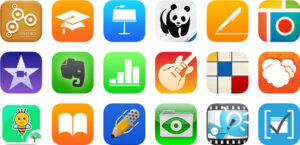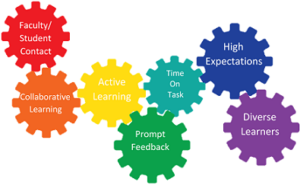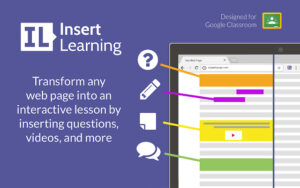There are hundreds of educational apps out there and new ones are coming out every day.
As an educator, we need to keep abreast of these new tech tools and choose those that can truly support teaching and enhance learning.
But how does one select apps for teaching, learning assessing students?

Do we ask tech people for advice? Do we consult users of those apps? Do we use our intuition or years of teaching experience to guide us in the selection of these apps?
Yes to all! But most importantly, the decision should be based on what is known about the nature of learning and how best learning can be facilitated in the classroom.
In other words, we need to turn to well established pedagogical principles to help us select tech tools that support teaching and learning.
The following are perhaps some of the most important principles that you could consider when selecting and using apps for your in person or remote teaching.
Two sets of principles are presented below. The first set is derived from insights from general education theories; the second set from second language learning theories and ELT research.
General educational principles
- Do the apps improve student participation?
- Do the apps increase learner motivation and engagement?
- Do the apps promote deeper learning?
- Do the apps help clarify hard-to-explain concepts?
- Do the apps allow teachers to check, monitor and evaluate student learning?
- Do the apps increase your overall teaching efficiency?
- Are the apps easy to use?
- Are they worth their cost?

Language Learning Principles
- Do the apps provide students with rich, interesting and meaningful language input?
- Do the apps provide students with multiple exposure to target language features?
- Do the apps promote noticing of important target language features?
- Do the apps provide students with frequent and meaningful practice of previously learned language?
- Do the apps promote multimodal processing of target language materials?
- Do the apps promote creative language use?
- Do the apps create greater awareness of the social purposes of language use?
- Do the apps provide exposure to a wider range of language varieties?
Let’s look at a couple of educational apps that are quite popular with teachers and assess them in terms of the principles above.

Screencast O Matic is a freemium screen recorder that allows users to record, cut, edit, save, and share screencasts. Teachers can create screencasts for various purposes e.g., adding voice over to lecture notes, highlighting key language features in a narrative text, providing video-based feedback on students’ projects or assignments. Students can create screencasts to share their thoughts on a topic and demonstrate their understanding of a concept.

Insert Learning is a free Google Extension app that allows users to insert discussion questions, online resources, sticky notes etc. on any website page. In other words, InsertLearning allows us to transform static contents on the web into interactive and engaging lessons. Students can also insert notes and insights they learned on the web pages as well.
The two apps above are free and easy to use, but also reflect some of the principles outlined above.
Screencast O Matic and other screen recording apps (e.g., Flashback Express) allow teachers to engage students in multimodal learning which can potentially deepen their learning. Its screen capture function allows teachers to draw students’ attention on important language features that students often have difficulty in acquiring (e.g., the use of tenses).
Similarly, InsertLearning can easily make our lessons more interactive and allow students to work both individually or collaboratively. Additionally, inserting intriguing questions when students read comprehensible and compelling stories on the web can help students become more focused in their reading, thus increasing the chance that students may speed up the acquisition process from being immersed in rich and meaningful language.
More reading


Beneficial information, I will need much time to learn how to apply those apps in teaching and learning